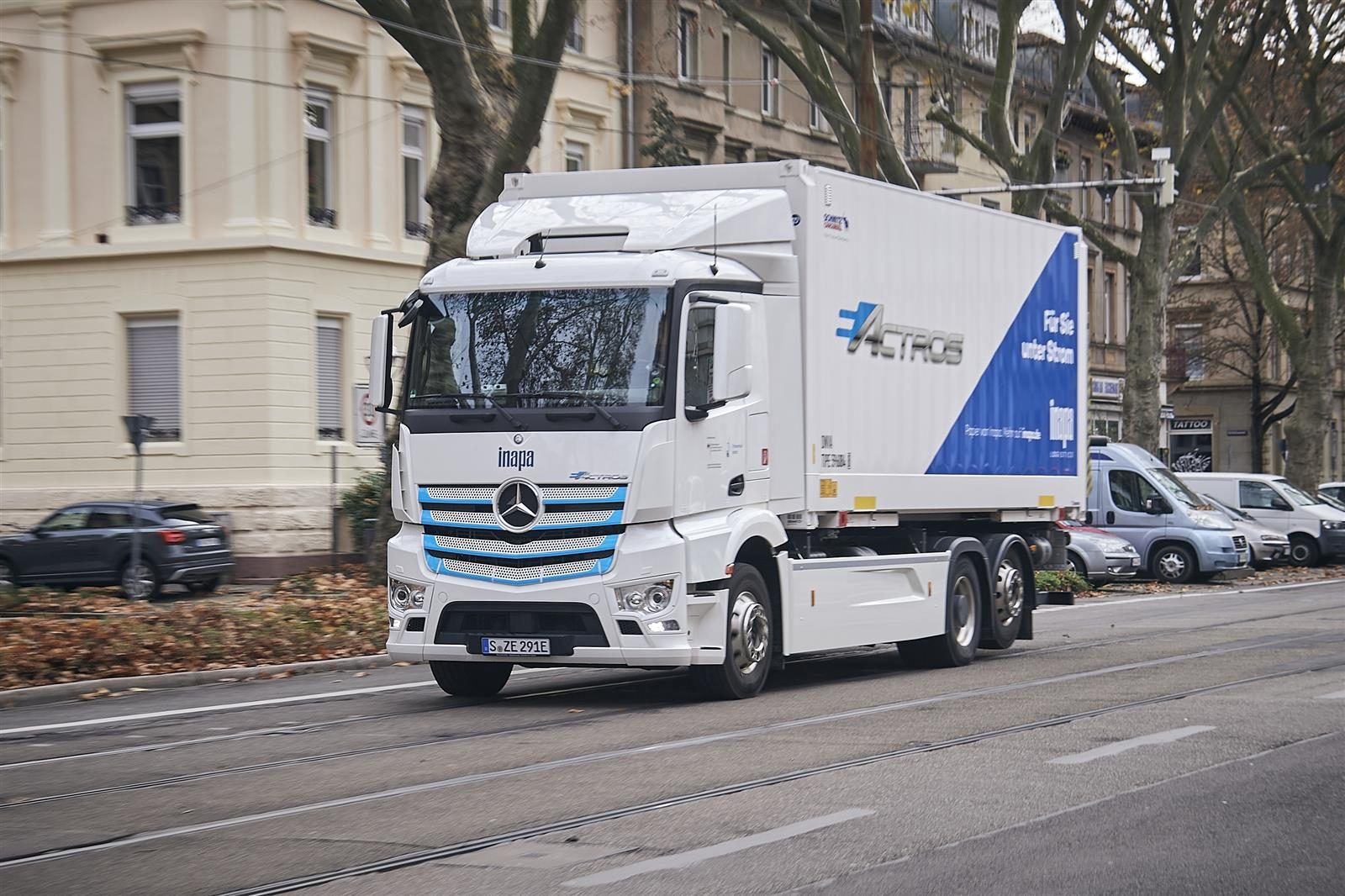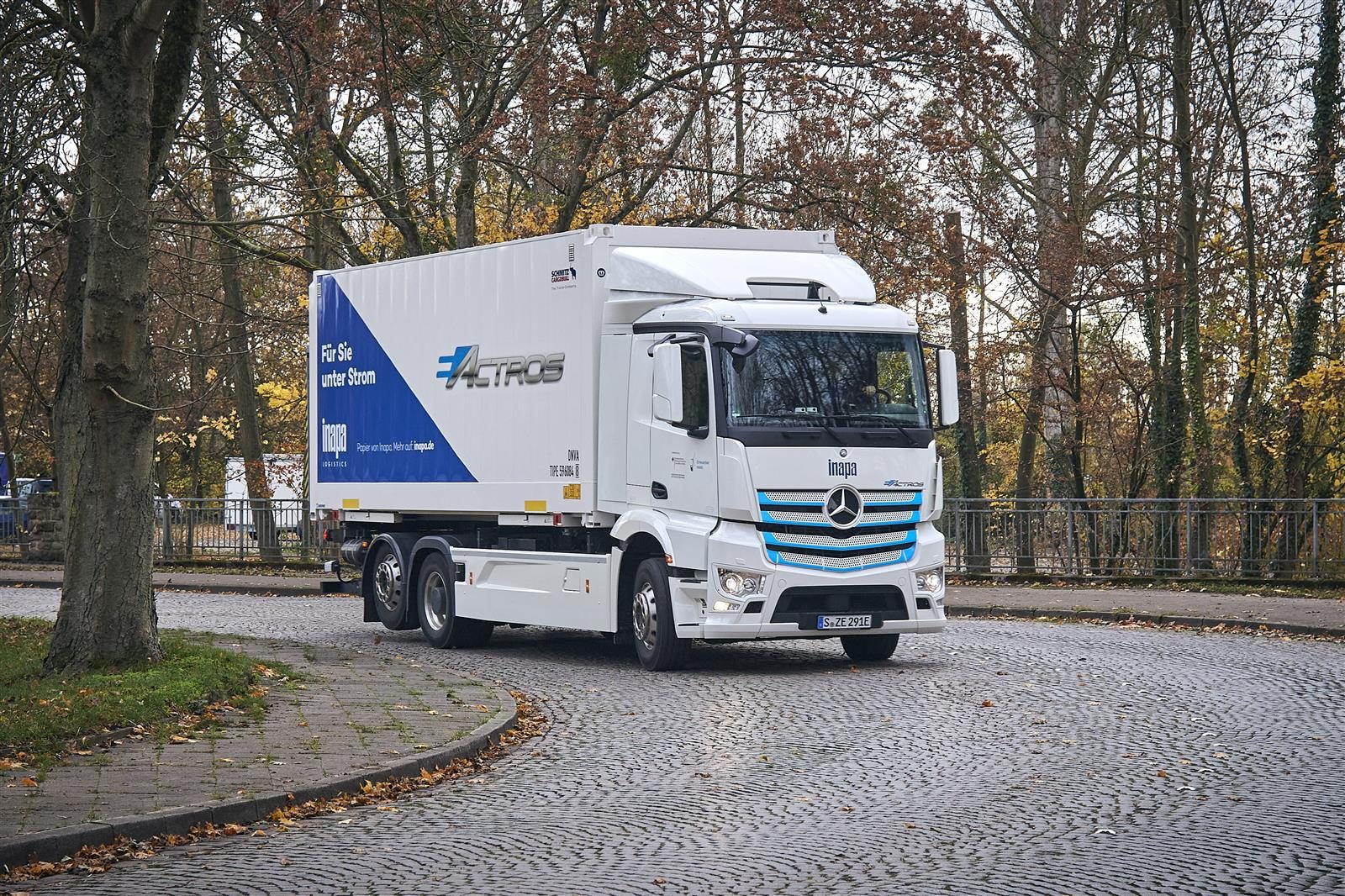Inapa Deutschland GmbH tests Mercedes-Benz electric truck in paper wholesaling

Another practical test of the battery-electric Mercedes-Benz eActros is starting at the company Inapa Deutschland in Ettlingen. This leading paper wholesaler is to use the heavy-duty electric truck for the distribution of palletised paper to printers in the Karlsruhe area. The vehicle has a range of approximately 200 kilometres and will cover a distance of between 150 and 200km each day. Its batteries will then be recharged overnight at Inapa‘s depot in Ettlingen.
“Since 2018, we have been using the prototype of the eActros to gain important insights for the planned start of series production of the battery-electric truck in 2021,” says Mercedes-Benz Trucks fleet customer manager Rico Claassen. “With this important milestone in mind, we are testing the eActros every day in a wide range of applications together with our future-oriented customers as part of our innovation fleet. We are delighted that Inapa is now one of the customers whose experience and feedback is contributing to the series production of the battery-powered eActros.”
Inapa Deutschland GmbH chief operating officer Frank Weithase says environmental protection and sustainability are among the most important tasks in their business.
“As a leading paper wholesaler, we bear a high level of responsibility going far beyond our immediate economic activities in the field of paper solutions. Of course, this also includes our transport logistics, which is entrusted with distributing our products. It is right here that the locally emission-free eActros contributes to our environmental strategy. We are looking forward to the upcoming practical use of the truck.”
Numerous insights gained from the first phase
Since 2020, the eActros has been in the second phase of its practical testing as part of the so-called ‘innovation fleet‘. One of the many findings gained during the practical tests is that the eActros‘s range of about 200 kilometres has proven to be realistic – regardless of payload, route or topography. The eActros is in no way inferior to a conventional diesel truck in terms of availability and performance in urban traffic, on highways or overland routes. The cooling systems for the cargo and the air conditioning – both electrically operated – have been functioning without any limitation in both extreme heat and winter conditions. Drivers are very pleased with the continuous availability of torque across the entire speed range.

The eActros: locally CO2-neutral alternative for urban distribution traffic
The eActros is based on the chassis of the Mercedes-Benz Actros. In addition, however, the vehicle‘s architecture is completely geared to electric drive and has a high proportion of specific parts. Drive is provided by two electric motors close to the rear axle wheel hubs with an output of 126kW each and a maximum torque of 485Nm each. This results in 11,000Nm each after the transmission ratio, which is a performance equivalent to that of a conventional truck. Lithium-ion batteries with 240kWh supply the energy for the eActros. Depending on the available charging power, the batteries can be fully charged within three hours (at 80kW).
The development and testing of heavy-duty electric trucks in distribution transport is being funded partially by the Federal Ministry for the Environment and partially by the Federal Ministry of Economics and Energy as part of the Concept ELV² project.
The eActros in series production: outstanding performance
The series-production eActros will be significantly superior to the prototype in a number of respects, such as range, power and safety. The eActros will be launched as a two- and 3-axle vehicle. Series production is scheduled to start in 2021 at the Wörth plant on the Rhine. In addition, Daimler Trucks will embed the vehicle in a holistic ecosystem that also includes consulting services relating to e-mobility. They include route analyses, checking for possible subsidies, support for operational fleet integration and the development of suitable charging-infrastructure solutions.




